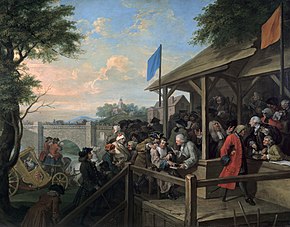Political colour
Colours used to represent a political ideology, movement or party / From Wikipedia, the free encyclopedia
Dear Wikiwand AI, let's keep it short by simply answering these key questions:
Can you list the top facts and stats about Political colour?
Summarize this article for a 10 years old
Political colours are colours used to represent a political ideology, movement or party, either officially or unofficially.[1] They represent the intersection of colour symbolism and political symbolism. Politicians making public appearances will often identify themselves by wearing rosettes, flowers, ties or ribbons in the colour of their political party. Parties in different countries with similar ideologies sometimes use similar colours. As an example the colour red symbolises left-wing ideologies in many countries (leading to such terms as "Red Army" and "Red Scare"), while the colour blue is often used for conservatism, the colour yellow is most commonly associated with liberalism and right-libertarianism, and Green politics is named after the ideology's political colour.[2][3] The political associations of a given colour vary from country to country, and there are exceptions to the general trends,[2][3] for example red has historically been associated with the Christian Church, but over time gained association with leftist politics, while the United States differs from other countries in that conservatism is associated with red and liberalism with blue.[2][3]
